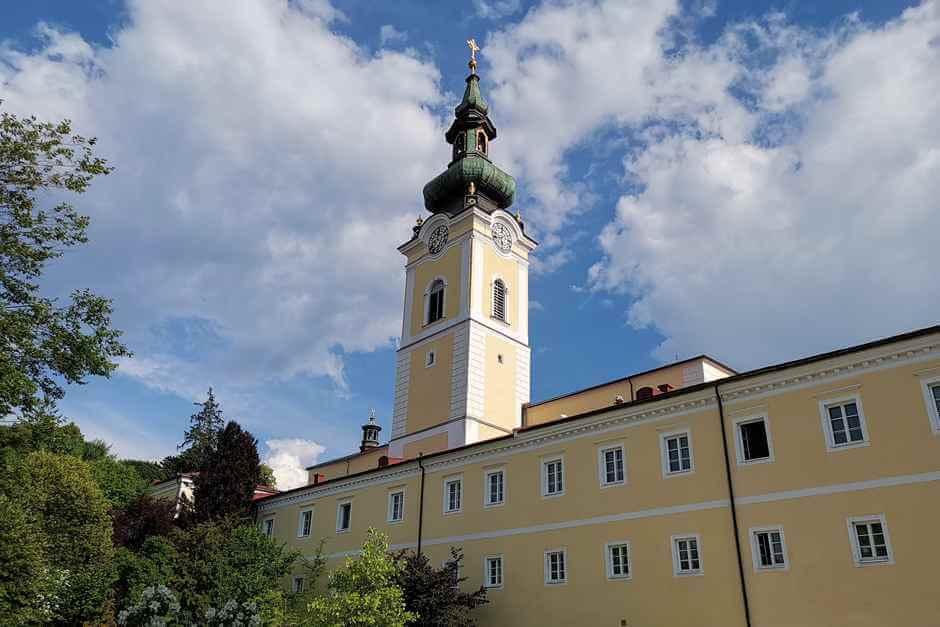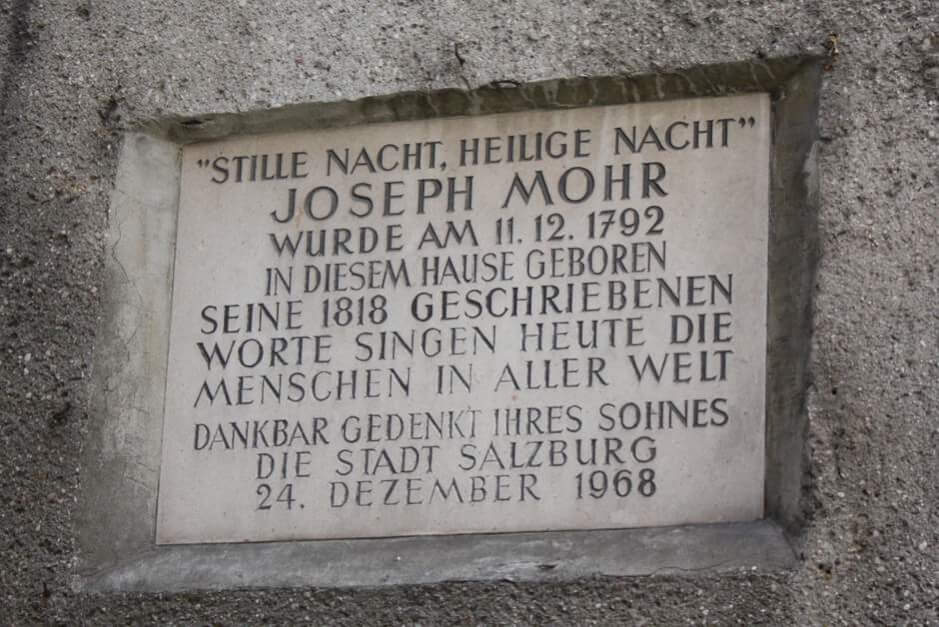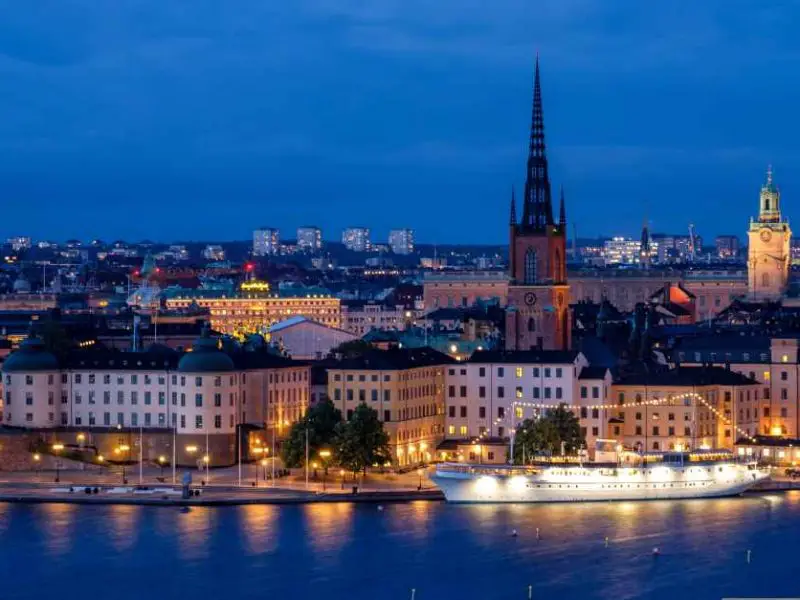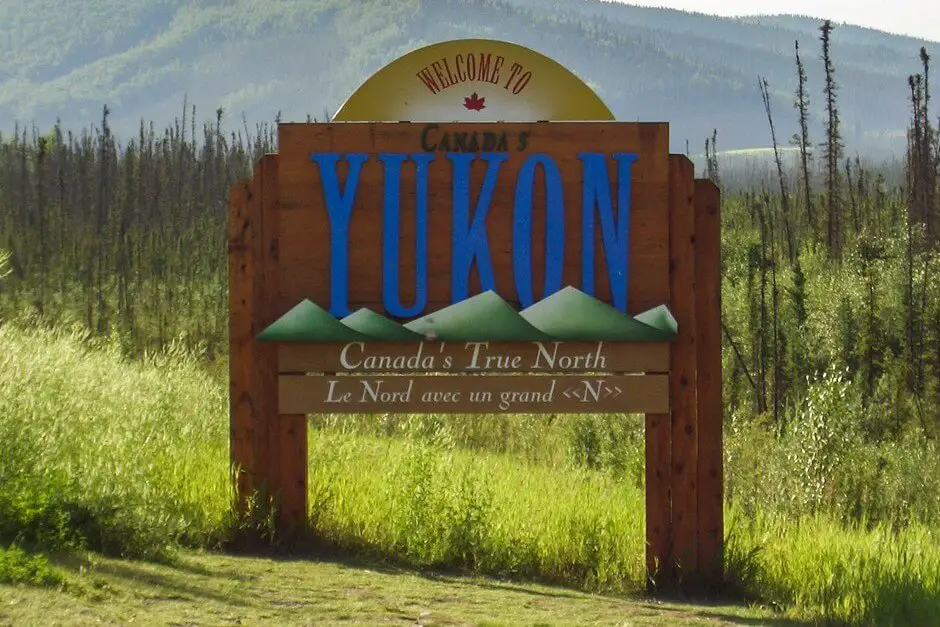Enjoy the Šumava beer with beer in the gardens of Stift Schlägl
The Šumava in the Mühlviertel is not only worth the trip because of Schlägl Abbey. In Aigen Schlägl, the monastery and the brewery beckon on an excursion. Here the collegiate beer and the gardens increase our enjoyment even more. The food from the monastery kitchen also does the rest. We are invited to a press trip to Schlägl Abbey and meet with Abbot Emeritus Martin Felhofer. He directed the fortunes of the monastery from 1989 to 2019 and has just handed over his office to his successor. He tells us about it over lunch in the guest refectory. Almost apologetically, he draws our attention to the fact that there is no meat for lunch. However, he doesn't know our preferences because they are Mühlviertel West Nester just taste delicious. This is a kind of strudel made from potato dough. They are filled with apples and raisins. A regional specialty from the Mühlviertel. And delicious!
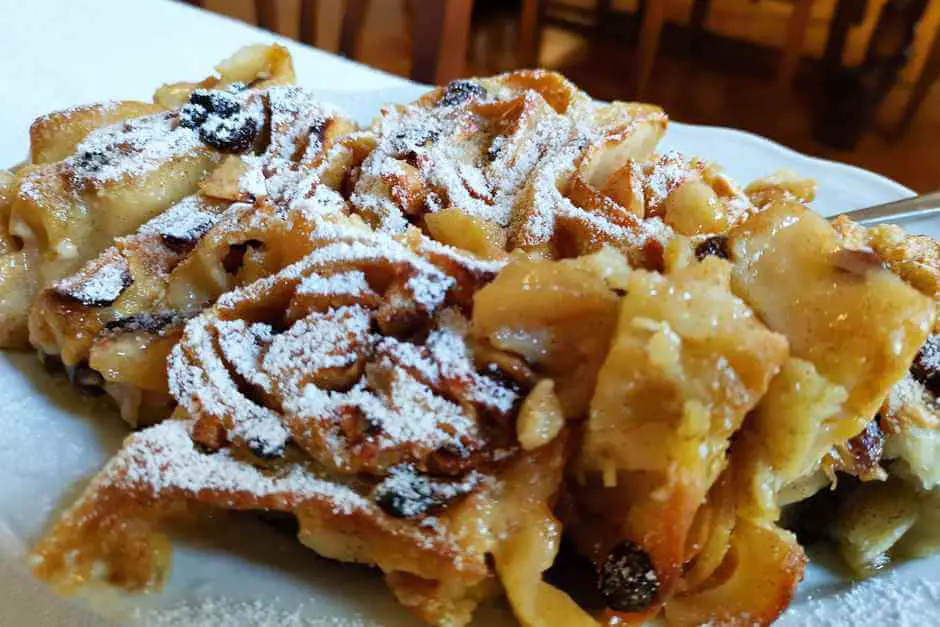
State horticultural show in Schlägl Abbey in the Bohemian Forest in the Mühlviertel
After this welcome full of enjoyment at Schlägl Abbey, Abbot Martin and Barbara Kneidinger, Managing Director of Bio.Garten.Eden, lead us through the State Garden Show Upper Austria. This took place on the grounds of Stift Schlägl until October 13, 2019. Most of the facilities will remain in place until at least 2024. In themed gardens the visitor learns interesting facts about how to garden in an environmentally friendly way. We start our tour in the island garden. This deserves its name, because the Große Mühl flows around it on both sides.
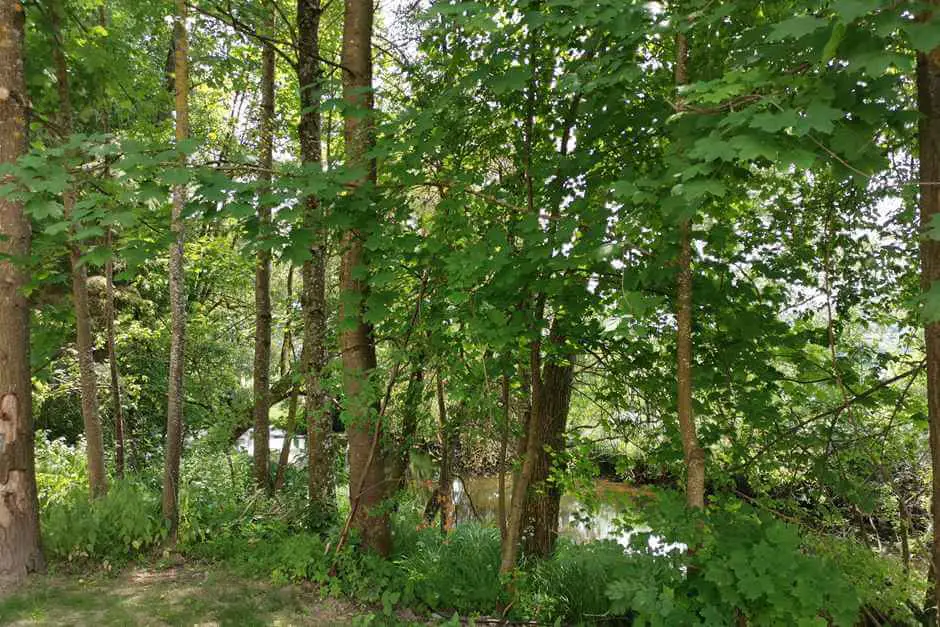
This is what you need for hiking in Schlägl Abbey
- With this packing list for hikers you will never forget anything on your hikes.
- Comfortable You need walking shoes for wide feetwhere you can walk well even on rough paths
- An backpack is definitely practical for everything you need on the go.
- Along the Walking There are also often benches for one Picnic on the roadside.
- Hiking destinations in and around Schlägl Abbey offer beautiful photo opportunities. So you should get your Camera .
- Be sure to take something to drink with you. You will be out in the sun a lot on hikes in the Mühlviertel. One drinking bottle * does a good job.
If you purchase via a link marked *, we receive a commission, which we use to run this blog.
The mill owes its name to the Mühlviertel. It is hot. Therefore, visitors like to use the Mühl for a cooling in the river. At the end of the island garden, we discover a replica river shell. Real specimens can be found in the waters of the mill.
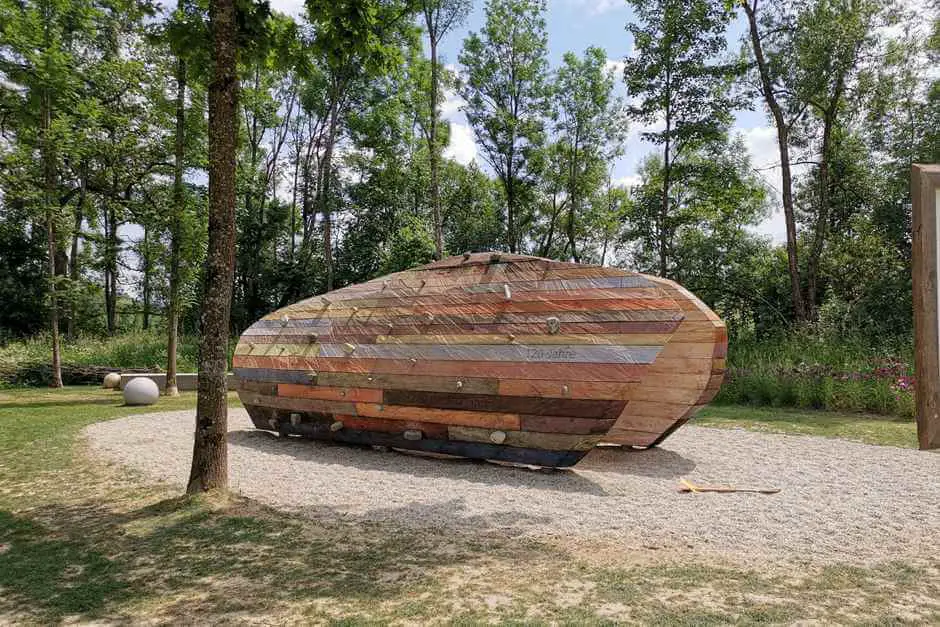
The creation garden
Over the bridge, which crosses the side arm of the Mühl, we arrive in the creation garden. This is particularly dear to Abbot Martin. Did he play a decisive role in shaping him? Flowers and plants grow in the flower beds, which have a special meaning in Christianity.
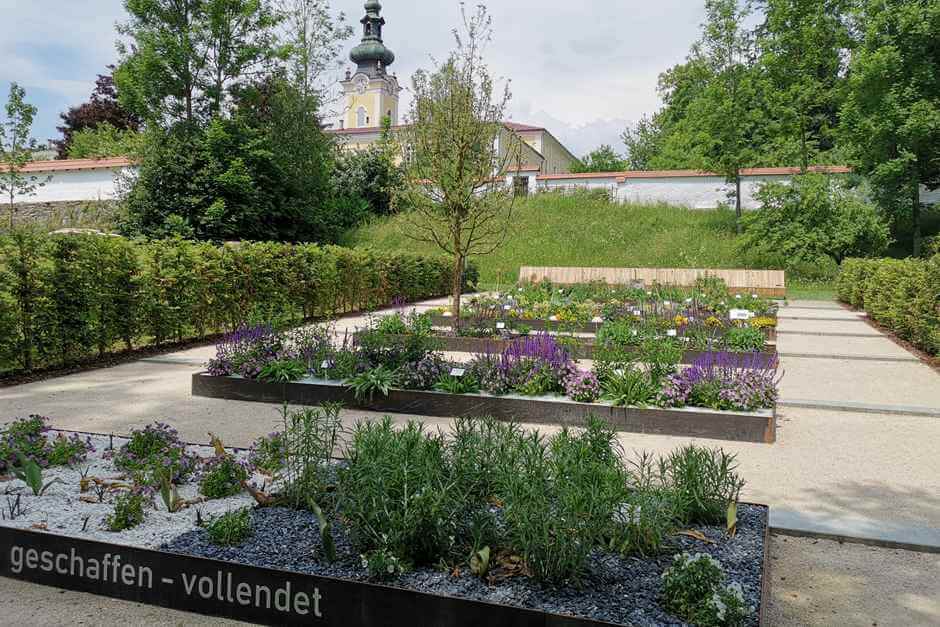
The "path of responsibility" belongs to the creation garden. This shows how reckless use of nature can have an impact. But it also provides suggestions on how to use leftovers effectively. In the spirit of Greta Thunberg's environmental movement, visitors receive tips on how to be considerate of the environment and nature.
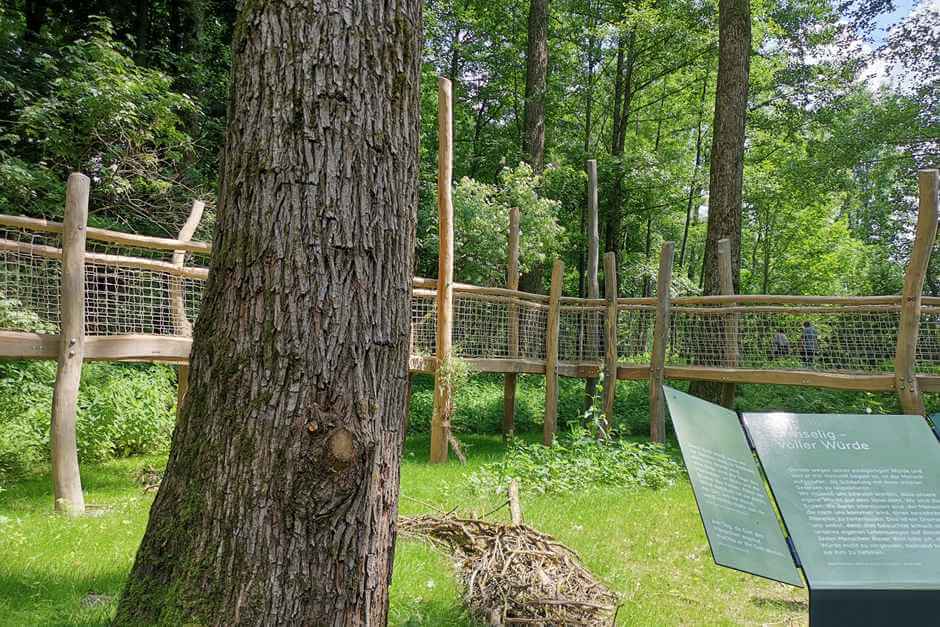
With a view of a pasture on which cattle and sheep graze, we pass the Global Home II. This is one of the art installations of the State Garden Show, which stands for the cultures that find a new home in Austria. A wooden house was created from numerous facades. Barbara Kneidinger says: "Over time, this building will be overgrown with plants and form a unified whole." I think it's a nice idea.
The bio-cycle
In the next part of the Bio.Garten.Eden the visitor can get information about the bio-cycle. From crop rotation to soil and water to insects, he discovers everything that is needed for a garden. Part of the garden is the Bio-School, which is also used for organic farming after the end of the Landesgartenschau.
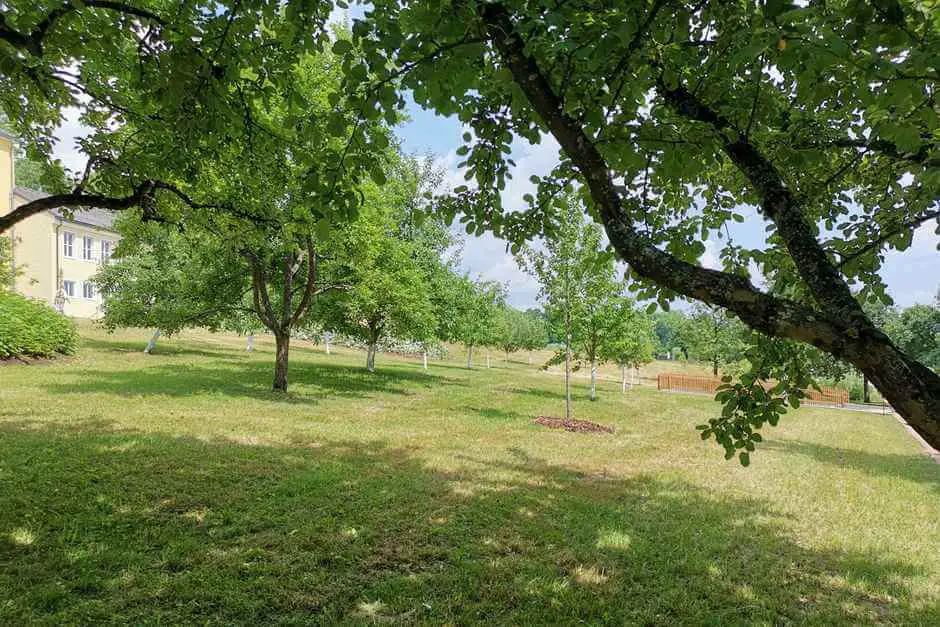
The community garden
The same applies to the communal garden. This also remains beyond the end of the garden exhibition. Hobby gardeners are already gathering here to order their beds. The complex is laid out with wide access paths. Therefore wheelchair users can easily reach their beds.
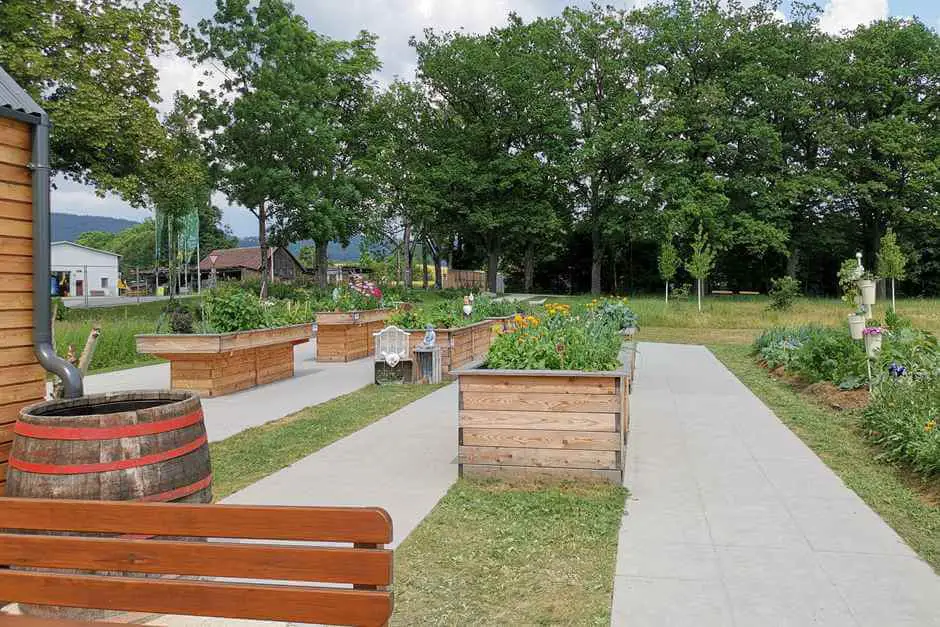
The permaculture garden
Not far away is this garden. In this, you pay attention to the fact that plants and animals promote each other. You do not sell snails, you create habitats for them. The same applies to weeds or garden waste. In a Permakulturgarten one uses everything. How well that works, we have already on one of our trips to Kleinwalsertal experience.
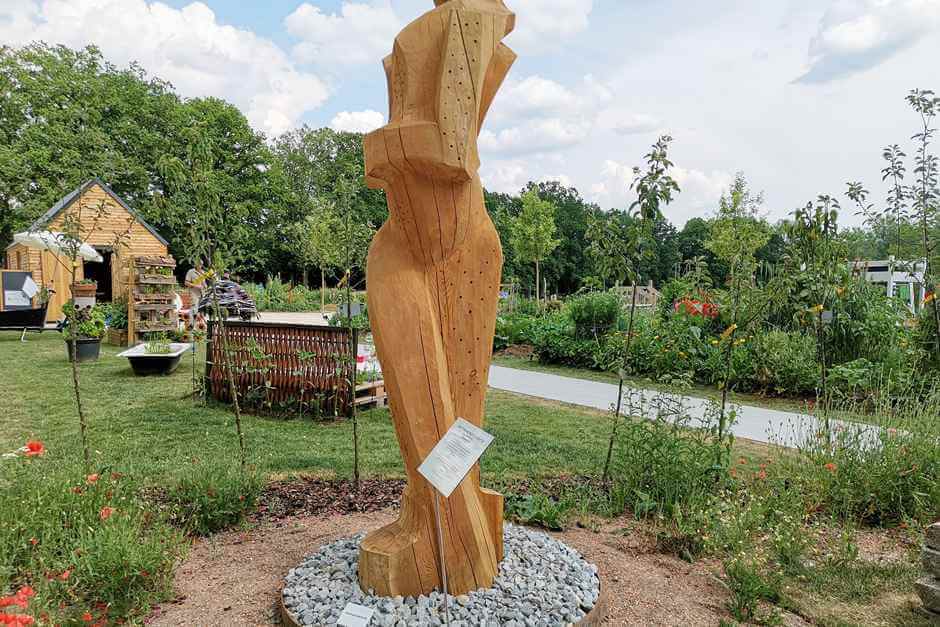
The founder garden
At the end of our tour through the Landesgartenschau we finally visit the Stiftergarten. It is a garden used for concerts. Once, one of the abbots of the monastery had a residence built on its edge. Today there is a labyrinth, a pond and a power place.
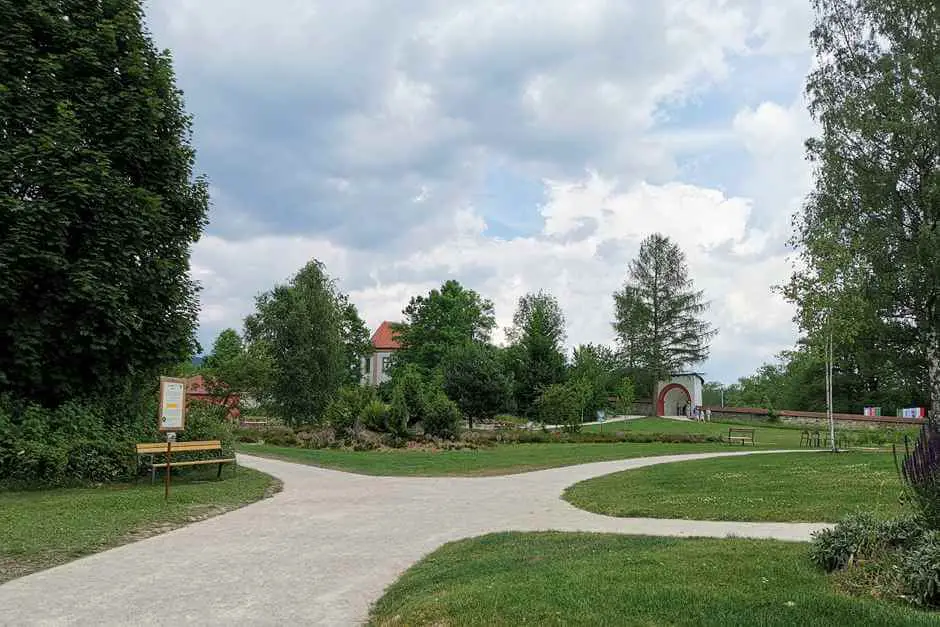
The gardens described here are also accessible to visitors after the Landesgartenschau.
Here you can find more information about:
Schlägler Hauptstraße 4
4160 Aigen-Schlägl
Stifts beer from the Stift Schlägl brewery in the Bohemian Forest in the Mühlviertel
After our tour of the state horticultural show, a visit to the Schlägl brewery was just the thing. This is where the monastery brews its Schlägl beer. The tour through the brewery was particularly exciting. We have already visited several of them on our travels. However, we still saw a few workers in the bottling plants. In the Schlägl monastery brewery, the process is now fully automated. A truck delivers used bottles. A suction device removes this from the boxes. Then a multiple washing process begins. Even the tiniest residues of dirt are removed. Only then do you refill the bottles with beer. A video shows the process of how the bottles are refilled.
We also found the beer museum of the brewery in Schlägl Abbey interesting. In it you can see how beer used to be brewed and distributed to customers. We definitely recommend a visit to this museum for anyone interested in beer and its production.
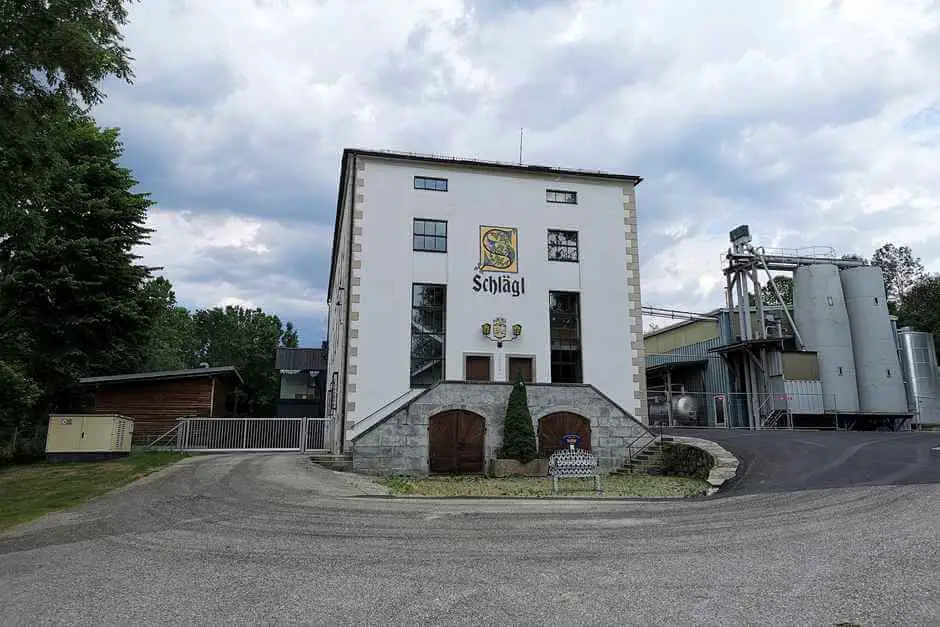
A beer tasting is a must
The concluding beer tasting is a must after a visit to the brewery. Master brewer Reinhard Bayer shows us how to do it right. As with the wine tasting, he lets the beer circulate in the glass. He smells it. "Especially with smoked beer you can smell the typical smell," he explains to us. “What does it smell like to you?” he immediately puts us to the test. I almost don't dare to say it. But to me, the smoked beer smells like bacon. When Reinhard Bayer notices my skeptical look, he laughs. "It smells like bacon, doesn't it?" So it does! "Most of the time it's the women who notice. The men don't dare to say it.” So my sense of smell isn't that far off the mark. In any case, the Schlägler Rauchbock tastes very good. Although I'm not actually a beer drinker. I also like the local beer, one of the craft beers that are brewed in Schlägl Abbey.
A guided tour of the Schlägl Abbey in the Bohemian Forest in the Mühlviertel
Before we meet Abbot Martin again for dinner in the monastery restaurant, the archivist H. Petrus shows us the treasures of the monastery. The collegiate church bears witness to the long building history of the collegiate. Founded in 1218 by Kalhoch von Falkenstein, the monastery can certainly look back on a long history. The architectural styles in the collegiate church make this clear. Here you can find everything from Gothic to Baroque to Neo-Baroque from the Historicism period. "However, we do not own any works of art by great painters," explains Archivist Petrus. "With the exception of the altarpiece painted by August Palme from Munich in 1845."
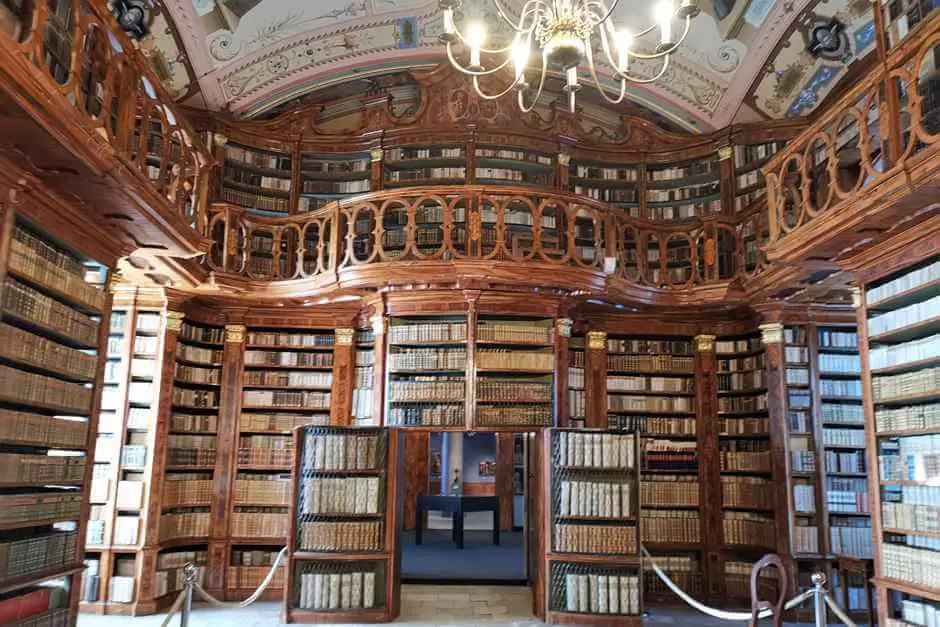
The ceiling paintings in the library also come from this painter. The Abbey owns around 60000 books from the period 1520 to around 1900. They are arranged in three tiers one behind the other on the shelves. Only part of it has been cataloged so far. "But that's not so important," says Archivist Petrus. “We only have a few first editions. Most of our works are already registered in Vienna anyway. The most valuable items in our document inventory are 240 parchment and paper manuscripts from the Middle Ages. 48 codices from the estate of the Bohemian early humanist Johannes von Rabenstein have been requested internationally.” This proximity to Bohemia certainly also has something to do with the fact that Schlägl Abbey is located in the border triangle between Bavaria, the Czech Bohemia and Austria lies.
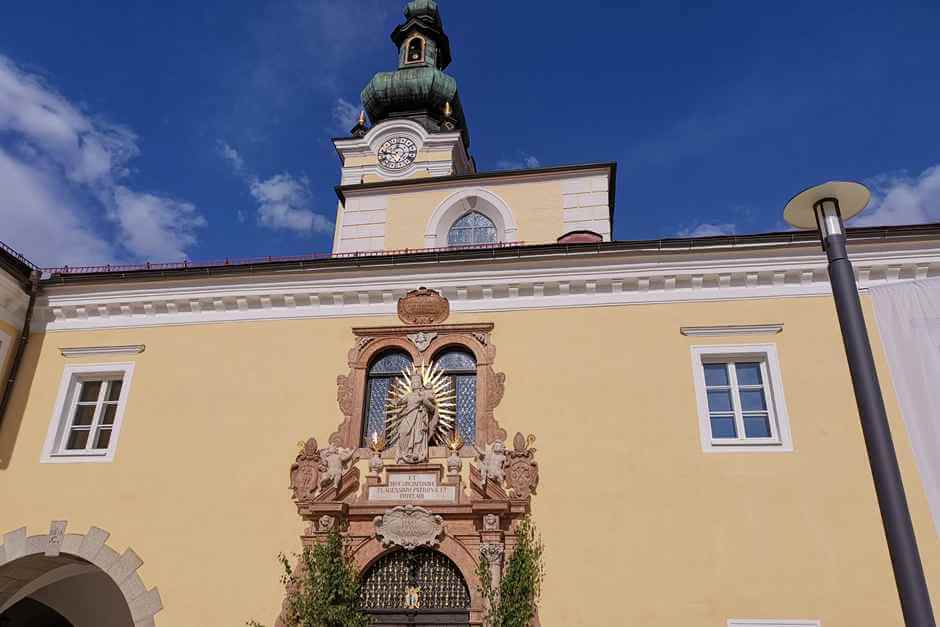
However, we refrain from visiting the Romanesque crypt. Instead, after this hot June day, a cool beer and a hearty dinner in the Stiftskeller are too tempting.
At the end of the day: eat well in the monastery restaurant
The monastery restaurant is one of the Guesthouses in the Mühlviertel, which we recommend from our own experience. Abbot Martin is already waiting for us on the terrace of the monastery restaurant. "This time there's also meat," he laughs. We then take full advantage of that. I order a boiled beef with mashed potatoes and vegetables. Petar likes it even heartier. He takes a roast pork with bread dumplings and potatoes. An eventful day comes to an end with a glass of abbey beer from the monastery brewery and interesting conversations about monastery life and the Mühlviertel.
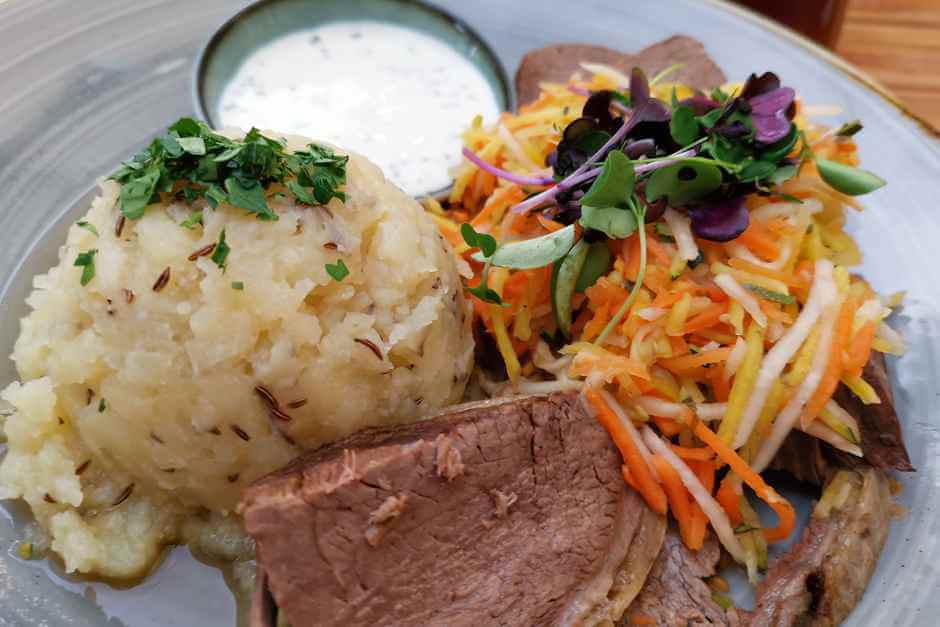
Note:
We did this program in one day. However, to really enjoy it, we recommend extending your stay to at least two days. Then there is also time for the benches, which invite you to take a break. For a walk in town. Or a coffee break in between. You can stay overnight in the guest wing of the monastery. This offers functionally furnished guest rooms with shower and toilet as well as a good breakfast. You can inquire about prices and availability by sending this email: seminar@stift-schlaegl.at.
More tips for the environment
- You can also combine a stay in Stift Schlägl with a Stay in Czech pen Zeliv
- Why not take a trip to the Czech Republic? The Lipno Dam offers interesting sights.
- Also not far away Vyssi Brod and its monastery in the Czech Republic.
- In České Budějovice you can taste Czech beer. Good after a beer tasting at the Schlägl brewery.
- Do you like historic old towns? Then you are guaranteed to like the old town of Cesky Krumlov (Krumlov). This is now even a UNESCO World Heritage Site.
- Do you like hiking? Then you will surely like a stay at the Monastery of Bad Mühllacken
- A hike through Pesenbachtal in Bad Mühllacken is also nice in summer
- Good connect can be Stay in Linz also with a tour to the Mühlviertel
- Upper Austria travel destinations
Travel Arrangements
Parking at the airport
Here you can reserve your parking space at the airport.
Arrival to Schlägl Abbey in the Bohemian Forest in the Mühlviertel
For example, book yours here Arrival by plane, bus or train*.
Arriving by car:
From Vienna and Salzburg: Via the A1 and the A7 to the Urfahr exit. Then continue on the B127 in the direction of Rohrbach. About 4 km after Rohrbach, turn right towards Aigen-Schlägl.
From Passau: Via the state road 388 in the direction of Wegscheid. From the Wegscheid/Kollerschlag border crossing, continue on the B38 in the direction of Rohrbach. Shortly after Oepping you finally turn onto the B127 in the direction of Aigen-Schlägl.
Arriving by train:
Am Linzer You can also take the Postbus to Aigen or Schwarzenberg from the main train station. The bus stops in front of the Schlägl Abbey. Alternatively, you can take the tram, line 3, from the main train station to Mühlkreisbahnhof. Then take the Mühlkreisbahn in about 1 hour 40 minutes to the Schlägl stop. The bus stop is only approx. 500 m above the monastery on the edge of the garden landscape of the State Horticultural Show.
Accommodation
You can also spend the night practically and comfortably in the newly restored guest wing of Schlägl Abbey. Contact address: seminar@stift-schlaegl.at. Alternatively, you can also Aigen and surroundings * stay.
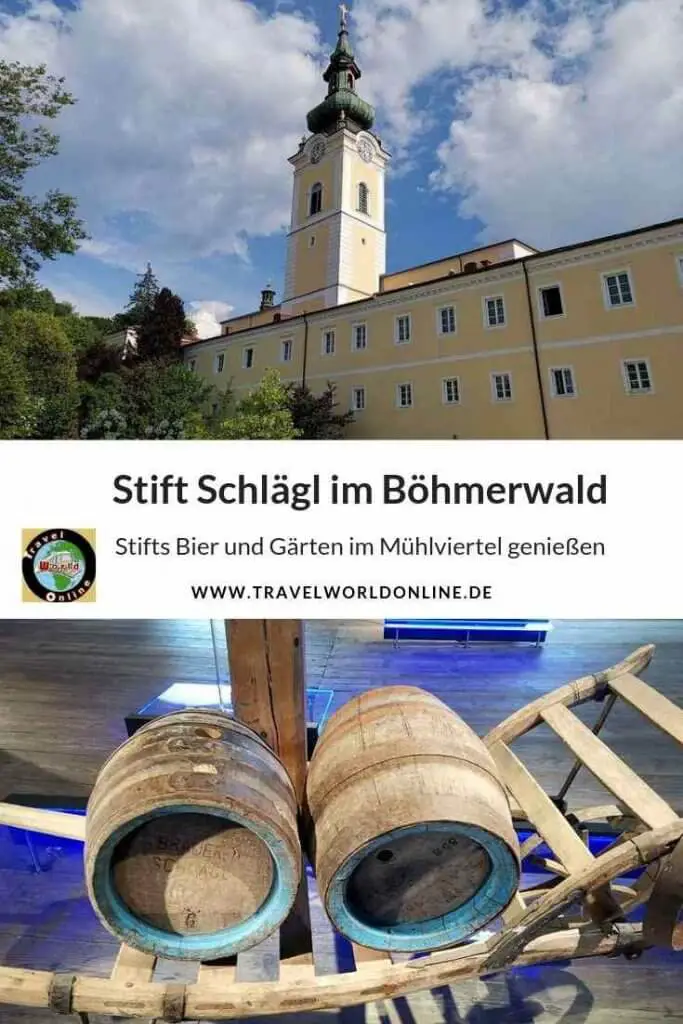
Do you also know:
- Where to eat well in Salzburg
- Flour from the mill by the rushing brook
- Visit churches, monasteries and cathedrals
- Vyssi Brod and its monastery
- Time out at Stams Monastery in Tyrol
- Bad Schussenried Museum for the beer mug
- Göttweig Abbey in the Wachau in Austria
Other Slow Travel Destinations you can also find it here. Other monasteries we also present here.
Source: own research on site with the kind support of Klösterreich. However, our opinion remains our own.
Text Aigen Schlägl pen: © Monika Fuchs and TravelWorldOnline
Photos of the Stift Schlägl brewery: © Copyright Monika Fuchs and TravelWorldOnline
Video Aigen Schlägl Stift: © Copyright Petar Fuchs and TravelWorldOnline
